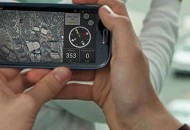Quality Courses
Content, Presence, Engagement
What is a quality course?
A quality online course utilizes a variety of instructional strategies to guide learners as a cohort toward a sophisticated and enduring understanding of a subject and its applications. The instructor provides in-course mechanisms for student reflection on course content and learning experience, for situating the learning in a personalized context responsive to individuals and cultures, and for monitoring progress. The instructor also works in real-time with students, providing timely feedback, moderating student communications, problem-solving, and collaborative work. Instructors are involved and responsive facilitators of understanding throughout the learning experience.
If this sounds too esoteric or abstract, that’s OK! CTL exists to fuse pedagogy into course design and delivery. The Characteristics of High Quality Courses checklist is a good place to start your exploration.
How can I create a quality course?
As the instructor of an online course, you are designing the curriculum and (virtual) classroom as well as delivering course materials and facilitating student understanding through interaction and feedback. While this is no different from your leadership in a face-to-face class, the online environment may break the various components of teaching — for example, design and delivery of a course — into somewhat distinct pieces. In a quality online course, you are attentive to the various pieces as well as their relationships to one another, i.e. the student’s experience of a cohesive, facilitated learning experience.
As the creator of an online course, you will want to consider:
Course Planning Basics
In accordance with UAF Faculty Senate policy, every online course provides a syllabus that includes all Faculty Senate requirements. Other elements expected in an online course can be found in the first section of the Characteristics of High Quality Courses checklist, including:
- Welcome letter or equivalent and a Getting Started Area;
- Links to support for students from CTL and UAF;
- Making contact and first assignment assignments;
- Clear unit objectives;
- Clear assignments in terms of content or submission process;
- Explicit methods for specific, detailed feedback on assignments and activities;
- Assignment and/or unit due dates or at least a suggested schedule;
- A process for documented submission of lessons (email does not meet this requirement);
- A grading mechanism that allows students to verify their progress;
- Clear policy regarding response time and individual provisos;
- Instructor insight/presence in a course in the form of notes, original multimedia materials, or other forms as identified by an Instructional Designer;
- Opportunities for student reflection;
- Assessments matching unit objectives and course outcomes;
- Material meeting requirements of copyright law and Fair Use doctrine.
Planning for Quality
High quality courses often look different from one another, valuing internal consistency over uniformity. That said, the second section of the Characteristics of High Quality Courses document outlines, with links to further resources and explanations, feature commonly found in courses that facilitate rich learning experiences, including things like:
- Instructor introduction and opportunity for students to introduce themselves;
- Active learning opportunities;
- Support for learner-to-learner engagement and collaboration;
- Integration of student experience through context- and place-based learning;
- Objectives and assessments that are aligned with each other…and the content and activities of the course.
- Design for accessibility and according to principles of Universal Design
See more in the Characteristics of High Quality Courses document.
Engagement, Collaboration,
& Feedback
Instructional strategies may vary but effective online classes feature learner interaction with the instructor, with other learners, and ideally, with the larger community of interest in the field. Student collaboration on such things as project-based assignments and place-based, contextual activities is highly encouraged. At the very least, quality online courses must provide some way that students are visible to one another in order that they may form their own connections. A mechanism for this is automatically provided in the classroom of any in-person class but must be purposefully constructed in an online course.
Reflection
Student reflection is an important part of academic success. Reflection may take one of many forums, such as:
- reflection on their own learning and learning experience,
- reflection on the real-world relevance and application of what they are learning,
- meta-reflection on the learning materials, strategies, and structure employed in the course itself.
Situated Learning
Learning at all levels is most productive when it is situated in the student’s current and/or future context. Quality online courses should help students understand how the concepts in this course are applicable in and to the following, as appropriate:
- the real world,
- the academic sequence,
- the discipline, and
- the profession
Progress Awareness
Students taking online courses benefit when they can track their progress through the course. The most common strategy that instructors use for student-tracking is to provide access to their grades in an online gradebook. In this case, assignment submission, evaluation, and feedback are made visible and retraceable online, rather than through private emails.
Questions and Considerations
The instructor-as-leader does not have to — and should not — go it alone. UAF CTL provides faculty support at every step of the teaching process, from design and delivery through appraisal and revision. Check our Event Calendar for opportunities to get help with your course, or simply contact us.
Research Foundations
SYLLABUS REQUIREMENTS
UAF Faculty Senate Requirements. (2013). Retrieved from https://www.uaf.edu/uafgov/faculty-senate/curriculum/course-degree-procedures-/uaf-syllabus-requirements/.
INSTRUCTOR PRESENCE
Lehman, R. M. & Conceição, S. C. O. (2010). Creating a sense of presence in online teaching: How to “Be There’ for distance learners. 26th Annual Conference on Distance Teaching and Learning. Madison, WI. (note: search for distance OR CTL course + “welcome letter’)
WELCOME MESSAGES
Mensch, S. and Ali, A. (2007). Transactional distance theory and communication in online courses – A case study. Issues in Information Systems, 8(2), 224-228.
PLATFORM/PROTOCOL/PEDAGOGY
Gibson, J. and Blackwell, C. (2005). Heading for cyberspace: Planning a strategy for success with online classes. Journal of College Teaching & Learning, 2(10), 7-12. (See Figure 1: Suggested Protocols for Faculty)
Paechter, M., Maier, B., & Macher, D. (2010). Students’ expectations of, and experiences in e-learning: Their relation to learning achievements and course satisfaction. Computers & Education, 54(1), 222-229.
Cavanaugh, T., Lamkin, M. L., & Hu, H. (2012). Using a Generalized Checklist to Improve Student Assignment Submission Times in an Online Course. Journal Of Asynchronous Learning Networks, 16(4), 39-44.
Further Resources
In Practice

2D Design
Madara Mason’s “2D Design” suggests a weekly schedule that students can use to work through course content and assignments. The course is also broken down into weekly modules, and Madara is easily accessible to answer student inquiries.

Journalism
Robert Prince’s “Journalism 101: Media & Culture” uses role play and game mechanics to create a fictional world for students to explore as they work through course materials. This fictional “newsroom” facilitates peer-to-peer collaboration and situated learning in the course.
